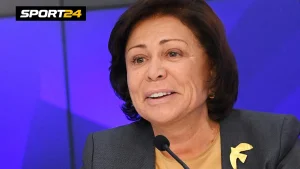
Go load
This is a tribute to that money that was known to load on devices, cards and devices and that one day one forgot, or stopped using, or simply spent and voila. It is an in memoriam to systems that were rage, either because they were the latest in technology or simply because there was no other option. It is about the money that someone once, on a trip to the Atlantic coast, loaded on a Sacoa card. Blue in the background, with the letters of the video game house in red, had a magnetic band and allowed money to be charged to play the classics of the time: the Time Crisis II (One was never available); The Pinball of the Crazy Adams or that of Terminator; he Pac-Man; he Mario-Bross; he Street Fighter II (neither no one ever saw one); he Wonder Boy; or the Daytona (That he knew how to have, thanks to the historic television program-x, his own competition). One put money on the card, inserted it into the machine that discounted the money and only there the game was enabled. It always happened that summer ended and one took the card with just some loaded cents. In other words: lost money, because in Buenos Aires nobody used to go to the Sacoa and in the “Fichines” neighborhood premises had to pay taca-taca.The Cyber, sometimes also broadcaster, were the lair of many for long summer afternoons filed that same card of cards there was one that, today, if you know what it is already for the geriatric (or for the morgue): the phone recharge cards for the cell phone. In the omen of cell phones, the telephone plans were very different from those now. One could run out of credit and had to go to the kiosk and buy a phone card. Once open, the turned part had to scratch to discover a code, which when entering the phone enabled minutes to speak. And that is not all: there was a time when the criminals called the houses and, under different deceptions, they ended up making some confused to buy cards and passed the codes so that they, in turn, could continue to tele -saying. “Recharge SOS”. What was it about? If you ran out of credit to speak or send text messages he called a prefix and the telephone company carried money (at that time, the recharge was $ 5). On the next invoice, that aggregate came to pay. It was the future! Sacoa changed over the years but his card to load money to play was in the collective unconscious, however, not everything was talking on the phone. In the 2000s there was talk about the computer in the cyber. CIBER definition: Local of doubtful habilitation, clientele random and dim light with many computers, where pre and adolescents were going to speak for msn, play Counter-Strike OA “Look for information for school, more” while they open sites not suitable for minors. In the cyber, the employee had to be asked to enable the computer for a certain time. The amount -which came with promotion -is still remembered by many: “1 hour = $ 1.5 / 2 hours = $ 2 ″. The offer was attached to the wall, behind the employee, along with other posters such as: “NO SMOKING”; “Do not download music”; “Prohibited eating or drinking”; “Don't turn off the computer.” Beyond the promo, more than a “vicious” (as those teenagers addicted to the PC) used to be asked to charge money crazy: “Cargame 10 pesos.” And spent the whole afternoon to pure shot against other users or building lost civilizations in the Age of Empires II (No one ever played the one). And if today one goes to a kiosk and asks for a preload card, it is possible that They send it well to load.
